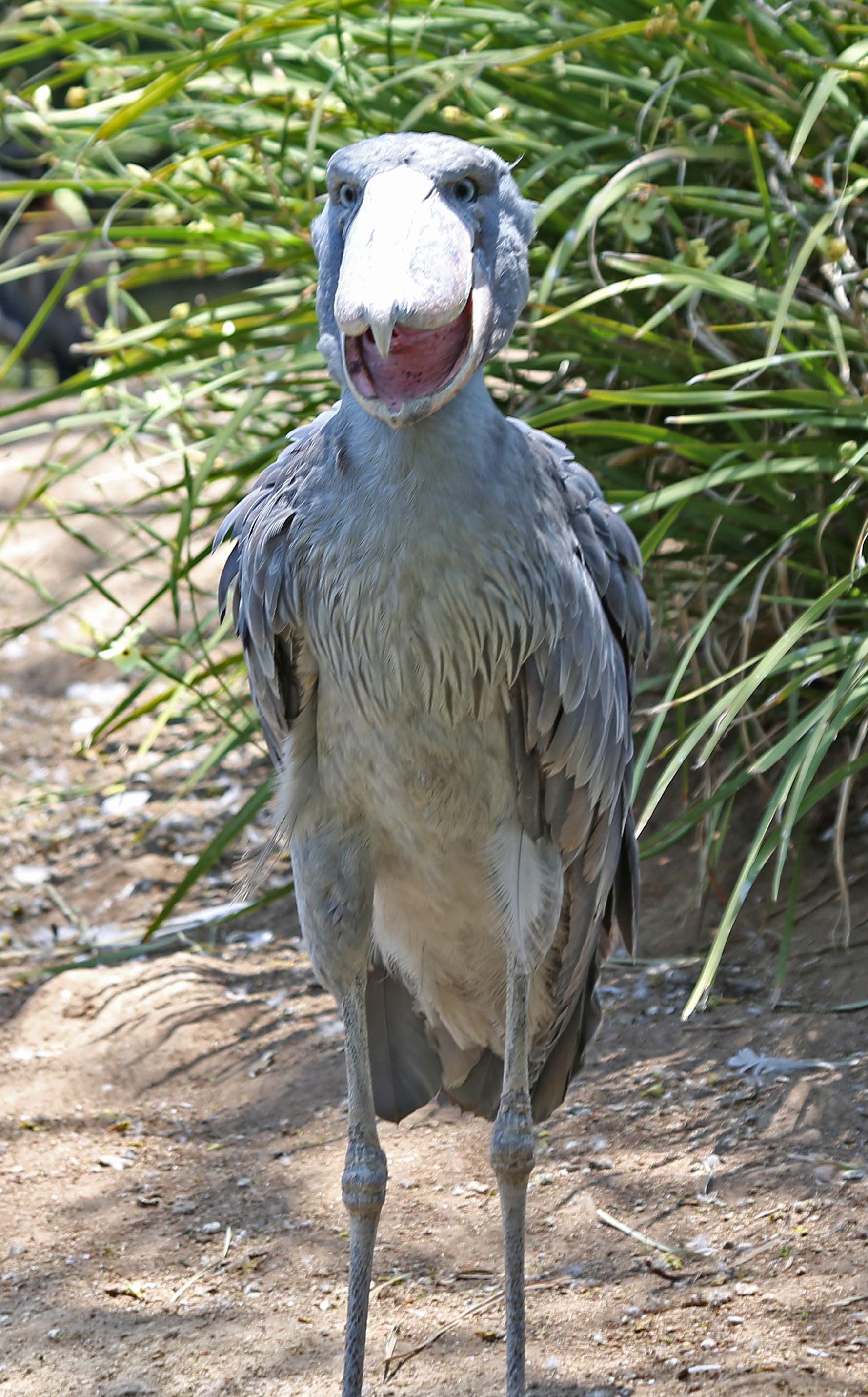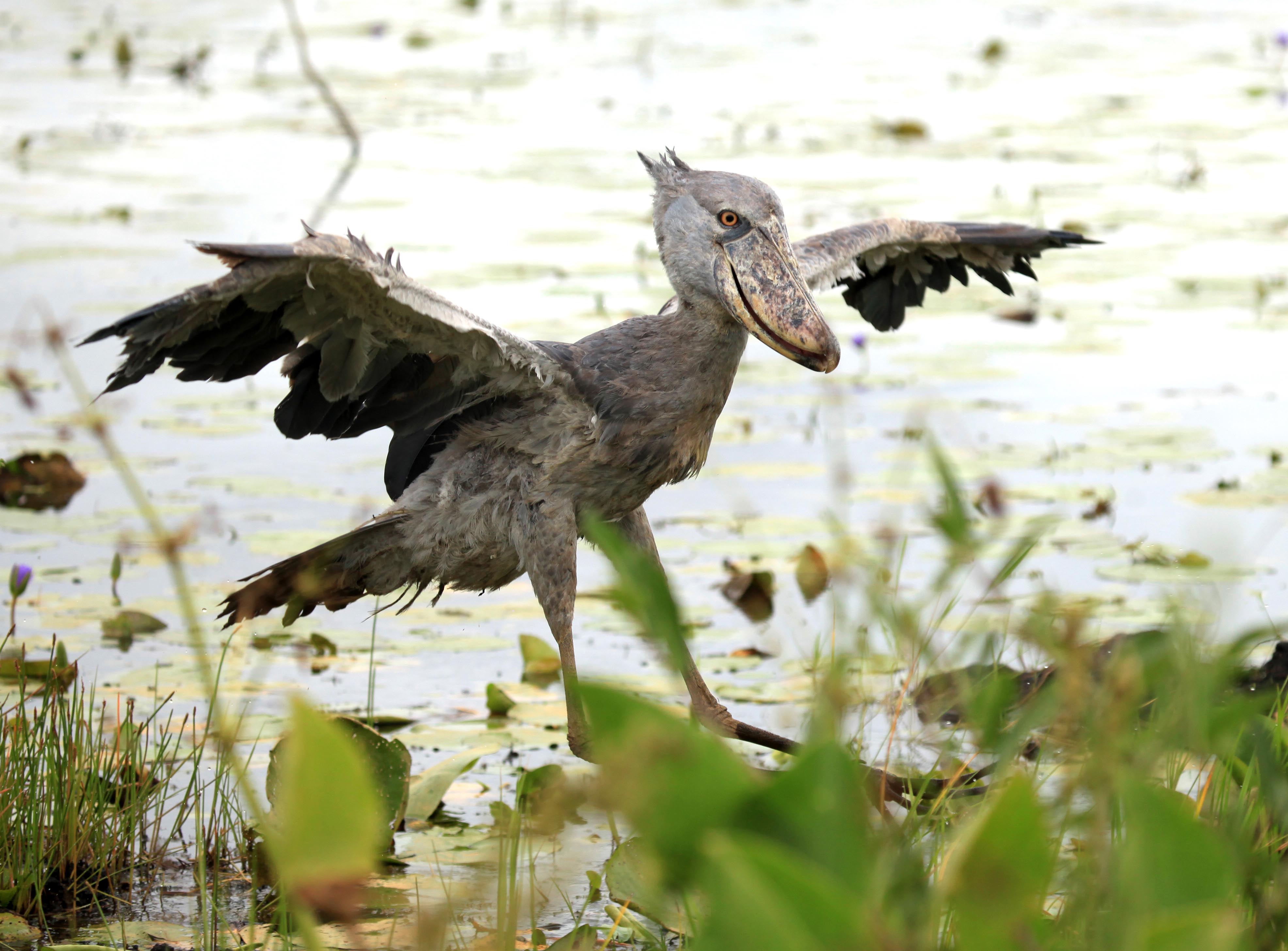

His dimensions too are something of an eye-opener. In profile, one can see the array of dishevelled tufts of feathers that shoot out at all angles from his crown. From almost any other angle though, he’s a total hoot. The King Whale-Head (the English translation of Balaeniceps rex) appears from the front like an old university professor, big-nosed, peering over his spectacles. Found in the marshes of East Africa, the shoebill is classified as vulnerable and is a bucket-list sighting for any avid birder. The shoebill ( Balaeniceps rex ) looks like it belongs in the prehistoric age.

When shoebills soar they make around 150 flaps per minute which makes them one of the slowest of any bird, with the exception of the larger stork species.The shoebill's feet are exceptionally large, with the middle toe reaching up to 18.5 cm (7.3 in) in length, assisting the bird in its ability to stand on aquatic vegetation while hunting.Shoebills are named for their enormous shoe-shaped bill which is the third longest bill among extant birds after pelicans and large storks.It will take the young shoebills 3 years before they become reproductively mature and start to breed. However, they are still fed for possibly a month or more after this. Fledging is reached at around 105 days and the young birds can fly well by 112 days. Shoebills rarely raise more than one chick because the younger chicks eventually die and are intended as "back-ups" in case the eldest chick dies or is weak. The female lays 1 to 3 white eggs and both parents incubate them for approximately 30 days. Both the nest and platform are made of aquatic vegetation. The large, flattish nesting platform is often partially submerged in water and can be as much as 3 m (9.8 ft) deep. Both parents engage in building the nest on a floating platform, after clearing out an area of approximately 3 m (9.8 ft) across. In more central regions of the range, shoebills may nest near the end of the wet season. In the extreme north and south of their range, nesting starts right after the rains end. Pairs nest solitarily and vigorously defend their territory from conspecifics. Shoebills are serially monogamous and form pair-bonds only for the breeding season. When young are begging for food, they call out with a sound uncannily like human hiccups. Both nestlings and adults engage in bill-clattering during the nesting season as a means of communication. When engaging in these displays, adult birds may also utter a cow-like 'moo' as well as high-pitched 'whines'.

Shoebills are normally silent, but they perform bill-clattering displays at the nest. The birds may also sometimes use their big beak to dig into pond-bottom mud to extract lungfish from their aestivation burrows. When prey is spotted, they launch a quick violent strike. Unlike some other large waders, shoebills hunt entirely using vision and do not use tactile hunting. While hunting, the bird strides very slowly and is frequently motionless. They stalk their prey patiently, in a slow and lurking fashion. Shoebills typically feed by day in muddy waters and, being solitary, forage at 20 m (66 ft) or more from one another. However, while foraging, if dense vegetation stands between them and humans, these waders can be fairly tame. They are quite sensitive to human disturbance and may abandon their nests if flushed by humans. Shoebills are noted for their slow movements and tendency to stay still for long periods, due to which they are often described as "statue-like".


 0 kommentar(er)
0 kommentar(er)
